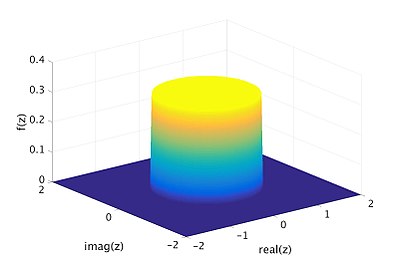Talk:Complex random variable
| This article is rated C-class on Wikipedia's content assessment scale. It is of interest to the following WikiProjects: | |||||||||||
| |||||||||||
[Untitled]
[edit]I started editing this page because it appears to have been abandoned at least since June 2016. I would like to correct the statement suggesting the second moment of a random variable is the variance. This is only true if the mean value is equal to zero. This would be considered a major edit, so I am looking for consensus on that.
Additionally, I think this page should include discussions on random complex vectors. I don't see a page in Wikipedia dedicated to that subject. Would like to get consensus on that also before I proceed. StevenDambrosio (talk) 13:45, 19 April 2017 (UTC)
- Agree that complex random vectors should be discussed. Adding them here is one possibility. I started working on the subject in my sandbox but the article gets quite long. Also when we discuss complex random vectors here we should discuss complex stochastic processes here as well to be consequent. Fvultier (talk) 18:14, 8 July 2017 (UTC)
- The central second moment of a random variable (which is what is usually meant by the "second moment") is its variance, while the raw second moment is not in general. So at most you could insert the word "central" for clarity. Loraof (talk) 22:15, 30 July 2017 (UTC)
Bad illustration
[edit]The section Uniform distribution reads as follows:
"Another example of a complex random variable is the uniform distribution over the filled unit circle, i.e. the set . This random variable is an example of a complex random variable for which the probability density function is defined. The density function is shown as the yellow disk and dark blue base in the following figure."
The varying colors along the side of the cylinder shown in the illustration have no reason for their existence. They are both distracting and misleading.
In fact, the side of the cylinder should not be part of the illustration at all, since it is intended to depict the graph of the probability density function.
I hope someone can modify or remake the illustration so that the side of the cylinder is removed entirely.
Furthermore, it would be helpful if the calibration of the vertical coordinate showed that the height of the yellow disk is exactly 1/π. And if the calibration of the horizontal coordinates showed that the radius of the yellow disk is equal to 1.



